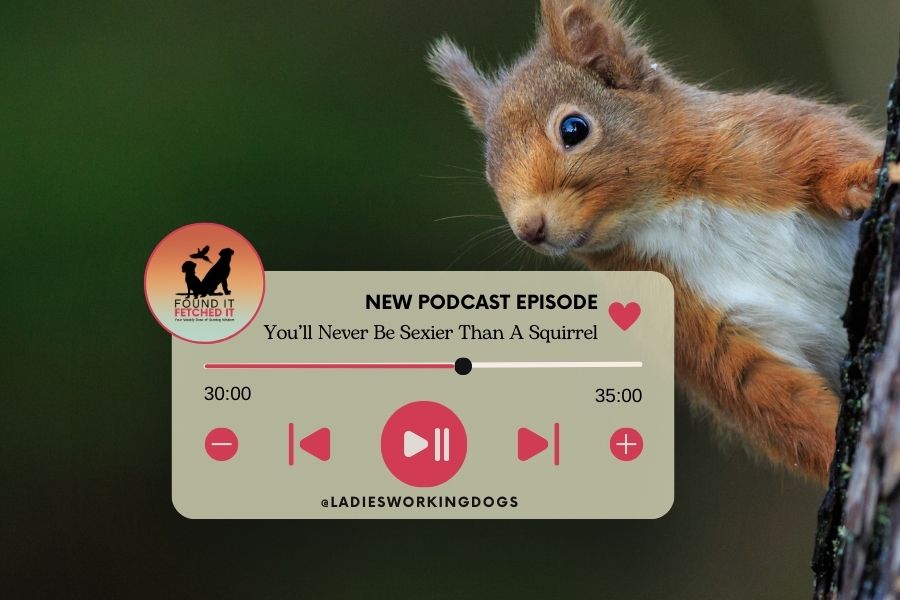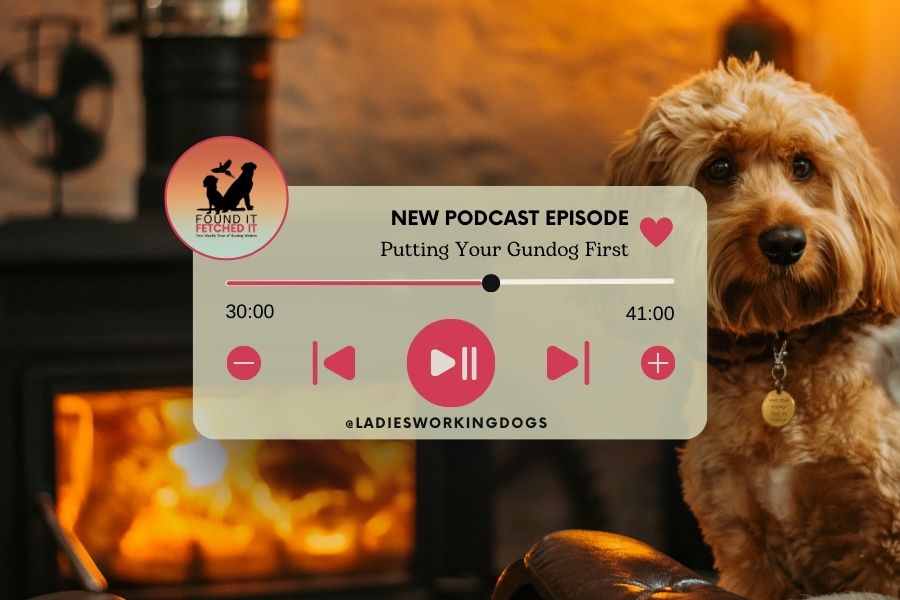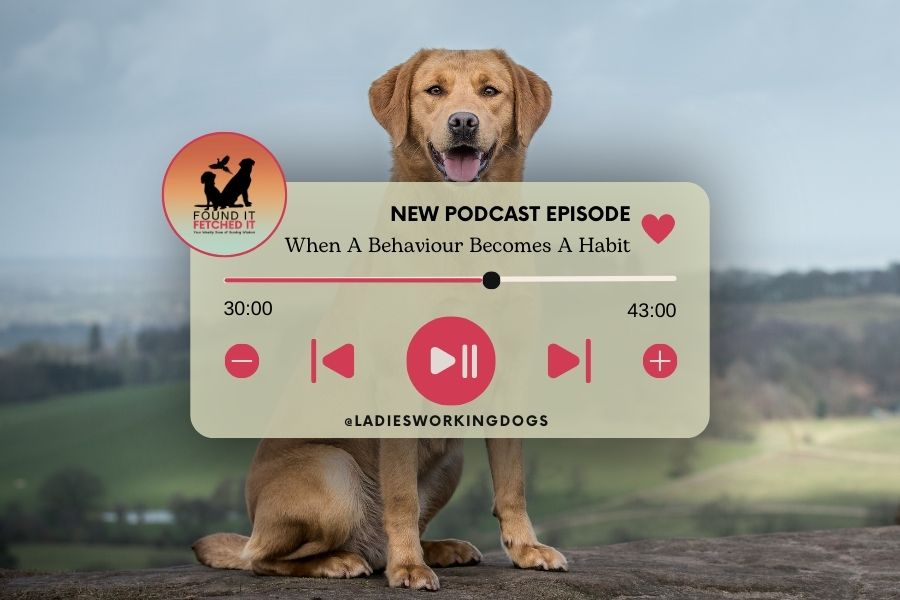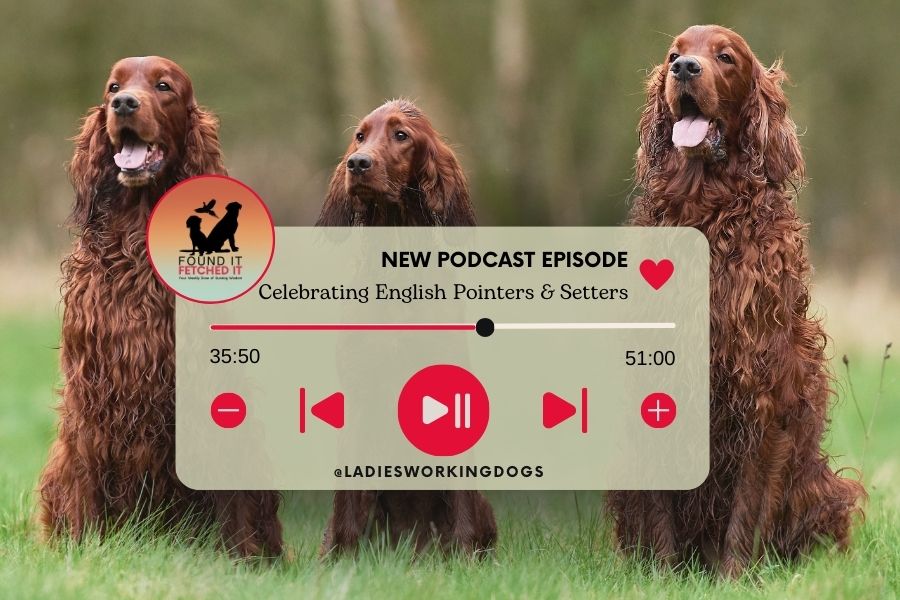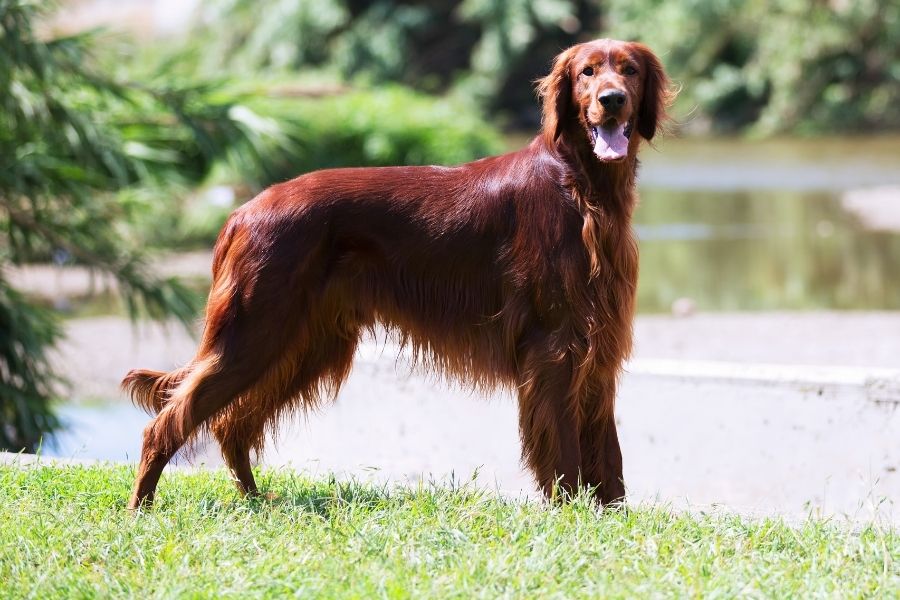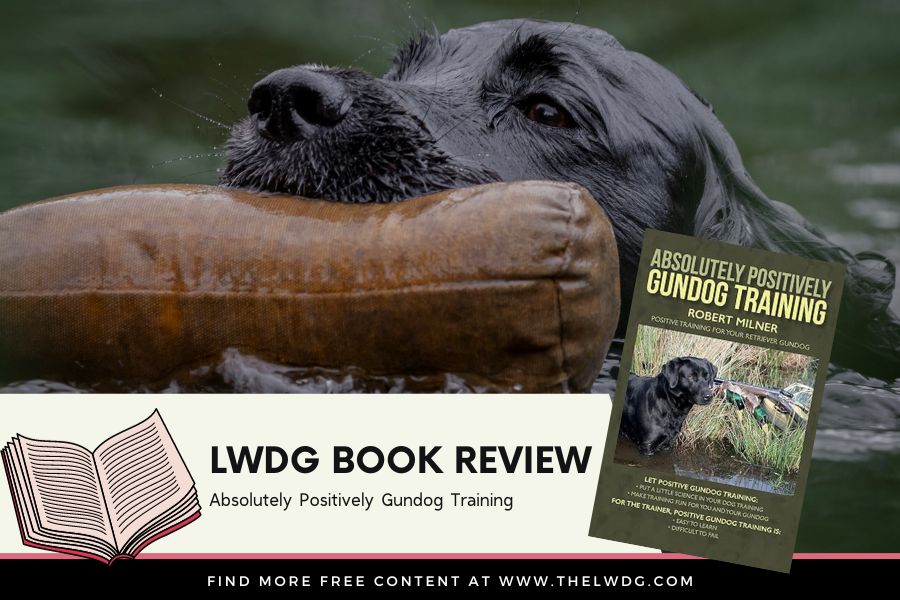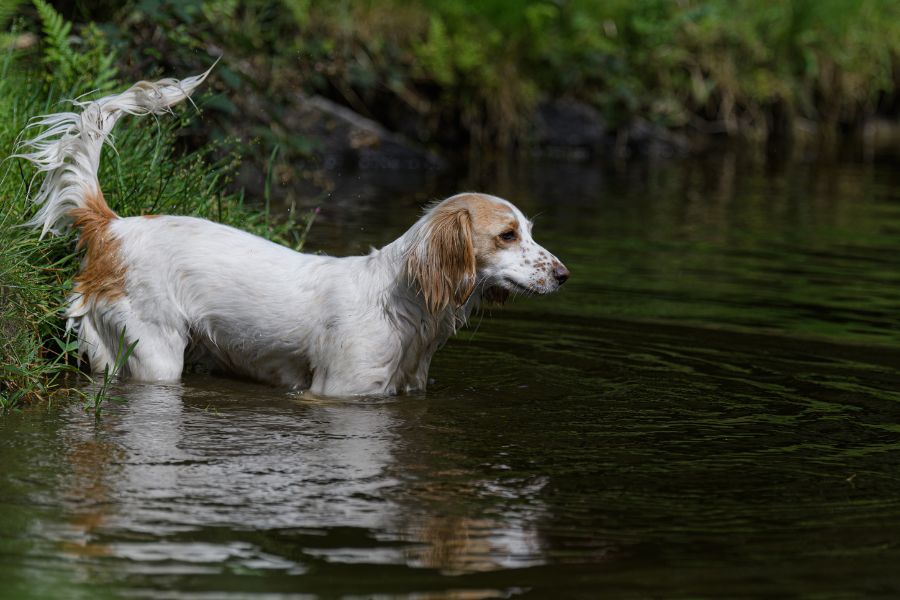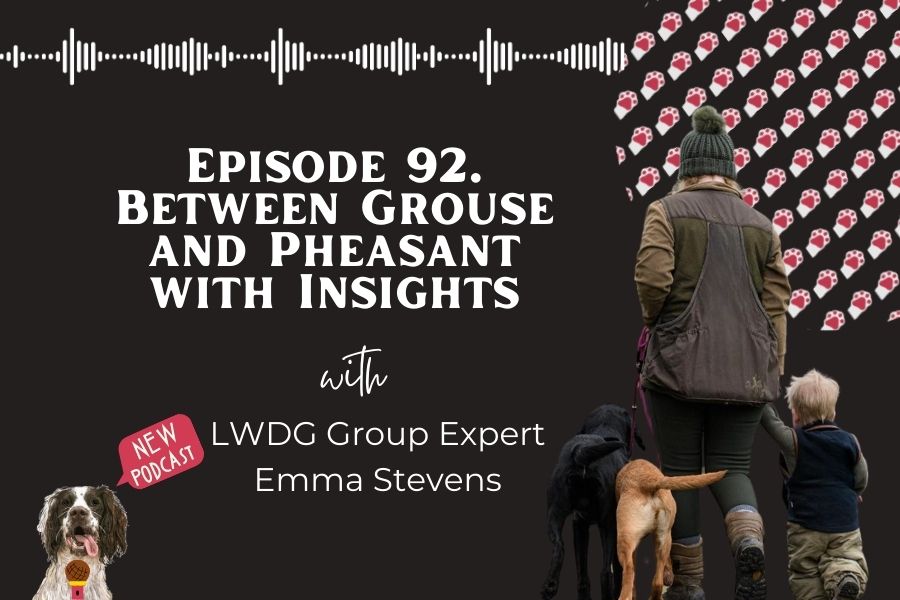Joining Joanne Perrott for this weeks Found it, Fetched it podcast is Emma Liddell, LWDG’s Mindset Coach.
Podcast Episode:
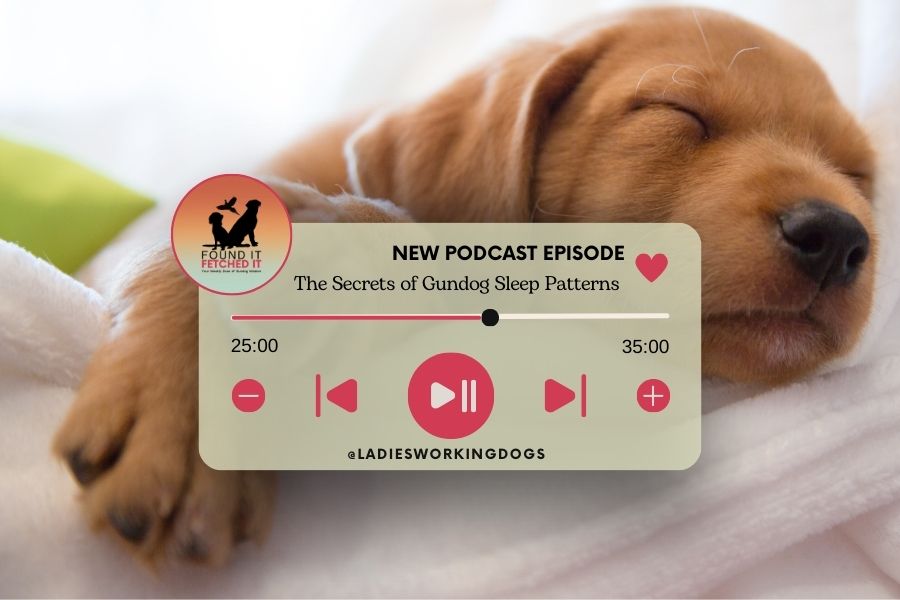
The Importance of Sleep
I’m sure we’ve all been there; you got in late and dragged yourself to bed. Then, in what seemed like the blink of an eye, your alarm is going off and you need to get ready for work.
If you’re anything like me it takes a while to get going after a disrupted night’s sleep and I’m not always as productive as I could be.
The same can be said for our dogs – adequate, and age appropriate sleep is paramount to their health, well being and trainability.
Sleep Needs for a Puppy
A puppy, just like a newborn baby, requires a huge amount of rest otherwise they become irritable, restless, and a bit of pain in the derrière.
Did you know that a puppy needs between 18 and 20 hours of sleep per day? That means they’re only supposed to be awake for 4-6 hours and this is where many problems with puppies begin.
Everybody knows that puppy’s like to be involved with everything; they follow us around, they play with the tea towel or the tv remote, they climb up our legs and they often don’t appreciate being put in their bed. As a young animal they have much to learn and the brain learns faster when it’s well rested!
A puppy’s daily life should pretty much be “Play (train), Eat, Toilet, Sleep” on a repeat cycle.
Providing enrichment for your puppy, alongside training and education can be very beneficial and probably buys you some time to cook your evening meal in peace. However, we absolutely must make sure that your puppy is not spending all of his downtime with his lickimat or snuffle toy – when he goes to bed for downtime, he needs to learn to go to sleep.
Subscribe To Found It, Fetched It Today
Growing Up
As the puppy develops, so does his sleep requirements. An ‘average’ adult dog usually requires an average of 11-15 hours of sleep per day and, hopefully, the majority of it happens at night – your dog has learnt to rest when you rest and to make the most of your awake time during the day.
As a dog matures and learns to self regulate, they usually have 70-75% of their daily sleep needs overnight, compared to a puppy who’s natural pattern is 40% of their daily sleep overnight and 60% during the day – this in part could well be due to there being much more going on during the day and your puppy taking everything in and then needing to sleep to process the information.
This is also connected with their evolution; as a predator animal, there is less need to be as alert as a prey animal – a deer needs to be more in tune with its surroundings and whether it’s on someone’s lunch menu.
Do Dogs Dream?
Research has been carried out to understand more about an animals brain during their sleep using electronic techniques.
When looking at rats it was proved that a sleeping rat will dream about the activities they participated in during their waking hours; rats were given a maze to play in and the electronic
recordings were able to pinpoint the images within the rats dream as a replication of them going through the maze.
The research moved on to dogs (and songbirds too!), amongst other animals I’m sure, to prove the same theory – your dog will replay the days events during their dreams. They will revisit the long retrieve across the valley, the hundreds of birds at the flush point of the drive, the cat that teased them from the wall, and the loving cuddles they had from you.
Does Size Matter?
Yes, it absolutely does!
A smaller breed of dog as an adult tends to sleep for 14-16 hours each day whereas a medium sized breed usually has around 10-14 hours in each twenty four hour period. When we look at large breed dogs, they generally sleep for up to 18 hours per day.
Sleep Cycles as we know them.
Dogs and humans share a similarity in sleep cycles but whereas a human will move through 4 or 5 cycles through an entire night, a dog progresses through those cycles much much quicker and around 20 times.
Only about 10% of a dogs’ sleep is REM sleep where we experience the cute gentle ‘woofs’, the rapid eye movement and the ‘rabbit chasing’ leg twitching.
When we understand that a dog’s body rhythm is different to ours, it’s easier to ensure that we give them enough time to rest. Whilst we don’t need to allocate them their own bedroom filled with plush beds, blackout blinds, and soothing music it’s worth bearing in mind that a quiet, undisturbed area will undoubtedly provide the best quality of sleep for them. In turn, this benefits us too.
Becoming a Senior
One thing that does align with humans is that a senior dogs’ needs will increase, just like granny and grandad.
Both physically and mentally an older brain will tire quicker and we often find that our senior dogs sleep much more of the day than they did as a youngster. It’s important to keep them as active as possible for physical health and longevity but equally it will take them longer to recover and to return to an energetic soul.
Final Thoughts
A well rested dog has a much better brain function and more capability to learn, to process information, and to ‘cope’ with everything they experience throughout each day.
If you’re experiencing troubles teaching your dog something new, or if your puppy is turning into the devil each evening, one of the things you should really consider is whether they’re getting enough age appropriate, quality rest and sleep.
What’s Your Gundog Goddess Style?
Who’s ready for some extra fun? Discover your unique approach to training with our “Which Gundog Goddess Are You?” quiz. You don’t want to miss this one



